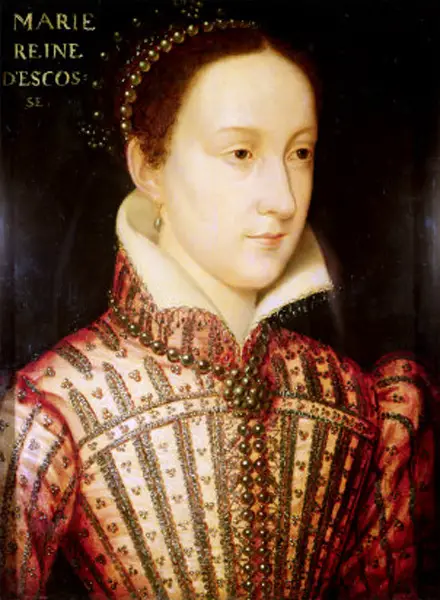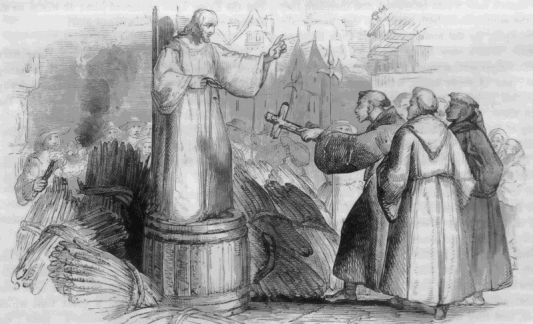On this day in Tudor history, 1st May 1517, foreign traders in London had their shops and property vandalised and damaged by a mob of angry apprentices and labourers.
What sparked off this "Evil May Day Riot"? What happened to the troublemakers? And how did Queen Catherine of Aragon and Henry VIII's sisters, Margaret and Mary, get involved? Let me explain...
Also on this day in history:
- 1461 – Execution of James Butler, 1st Earl of Wiltshire and 5th Earl of Ormond, at Newcastle after being captured by the Yorkists.
- 1508 – Birth of Sir William Cavendish, administrator. Cavendish was one of Cromwell's main agents in the dissolution of the monasteries and was appointed Treasurer of the Chamber in February 1546.
- 1536 – The May Day Joust. Henry VIII left abruptly, taking Sir Henry Norris with him and interrogating him about his alleged affair with Queen Anne Boleyn.
- 1551 – Death of Sir Edmund Knyvet, Norfolk landowner and MP. He helped the Duke of Norfolk suppress the Pilgrimage of Grace rebellion in 1536, served as Sheriff of Norfolk and Suffolk in 1539, and went with Norfolk to meet Anne of Cleves in January 1540. He also helped John Dudley, Earl of Warwick, suppress Kett's Rebellion in 1549. Knyvet was known for his hot temper and nearly had his his hand cut off after he was charged with hitting Thomas Clere, a servant of Henry Howard, Earl of Surrey, during a game of tennis.
- 1590 – James VI of Scotland brought Anne of Denmark, his bride, to Scotland. The couple had been married by proxy in Copenhagen in August 1589, but Anne had to abandon her journey to Scotland due to storms. James decided to go and fetch her, and the couple married properly at the Bishop's Palace in Oslo in November 1589.



This is one of those moments in history that you stand back and wonder who you have sympathy for.
You have to feel sorry for the foreigners who obviously have permission to trade and live in London and were probably doing well because they have lost their livelihoods and their lives.
You have to feel sorry for people if they have lost their own stalls or businesses and last of all the young people who were executed.
However, one can see why there is a clamp down on these rioters, attacking property and rioting and causing injury and a few deaths. The mob had caused trouble and disturbed the peace and rioting was a form of treason, which explains the horrible deaths. International trade was important for the capital to flourish and these traders were encouraged by the Government for their specialist trades, although certain home grown trades were protected. Without doing an in-depth study of the economic reality of London in 1517, it’s poverty, etc, it’s very difficult to comment on the sermon described, but if people are suffering from homelessness, lack of food and basic sustenance, have lost your living or your family are poor then new and foreign trade is always blamed, regardless of other factors. Foreign businesses may be selling luxury goods and even be encouraged with tax breaks. This would impact on home products which are more expensive to make and may be more heavily regulated. The sermon might only be a catalyst to trigger something much deeper and wider discontent. It sounds like the “Rivers of Blood” speech by Enoch Powell back in 1968. The term comes from Virgil although the term isn’t in the Birmingham speech, but it refers to the new anti racism legislation and criticises immigration from the Commonwealth Countries into Britain. He predicted trouble ahead and racism and immigration are also wrongly blamed with every attack on a Church or Mosque today. Political leaders like to make a big noise instead of looking to the real grass root problems which are behind such acts of hatred and fear, such as a need to survive. When hundreds and thousands of people are crammed in on top of each other, the tensions which define their relationship with others will from time to time come to boiling point and explode. This is what happened on May Day 1517. There had already been tension and attacks and any encouragement to take revenge went down with not much of a trigger. The youth were angry and they did as young people do when they are roused, they rioted.
It was the aftermath which has become most famous, however. A few days later in a great spectacle the King sat enthroned in Westminster Hall and 500 or more young apprentices were brought before him, halters around their necks and bound. The mothers cried out for mercy but it wasn’t that which caused King Henry to pardon them but the spectacle of the nobles and three Queens, all pregnant, Katherine, Mary and Margaret, going down on their knees, as well as Wolsey to pray for mercy. Henry frowned and then he gave the orders to set the prisoners free and everyone cried and cheered. It was a grand gesture, regardless of whether it was all show or genuine pity gained by the three women. It was one of those gestures which the pre Anne Boleyn Henry was famed for.